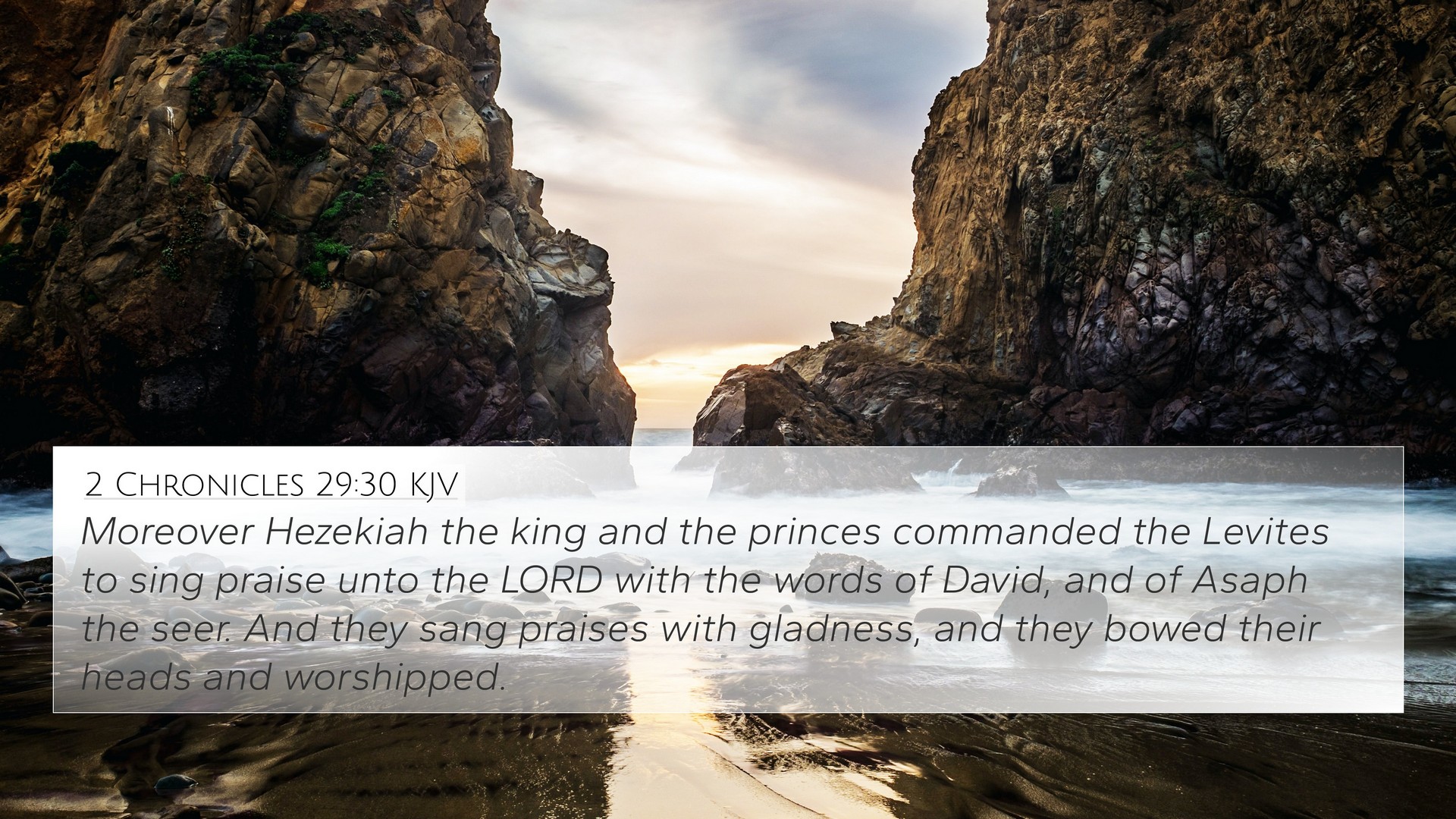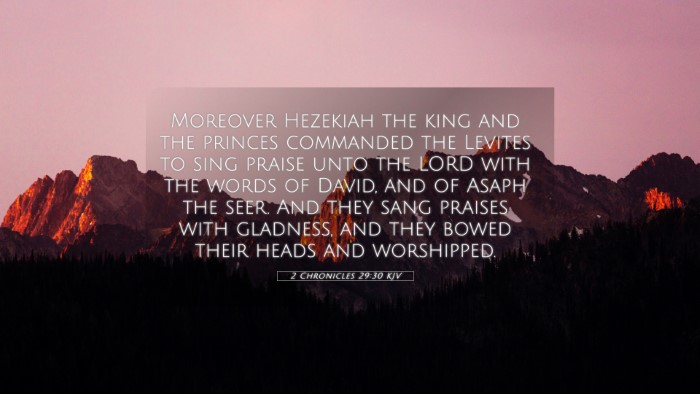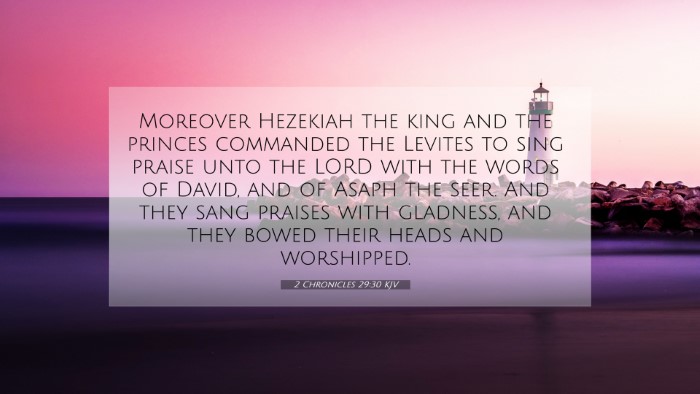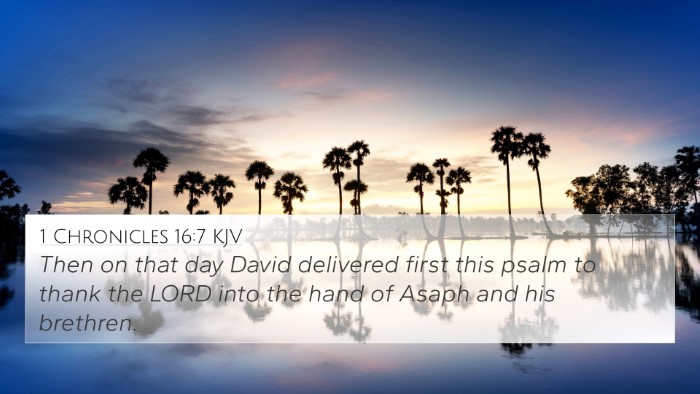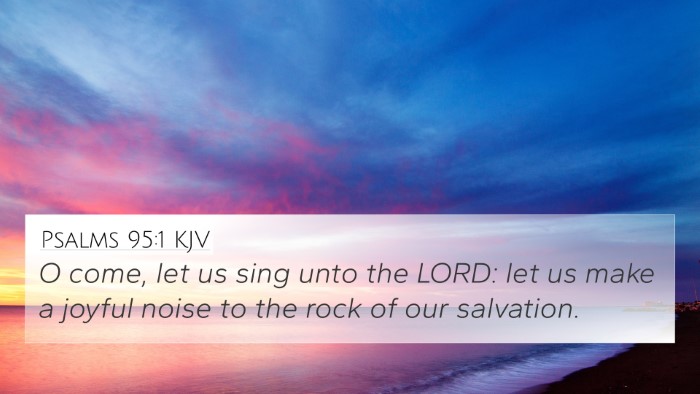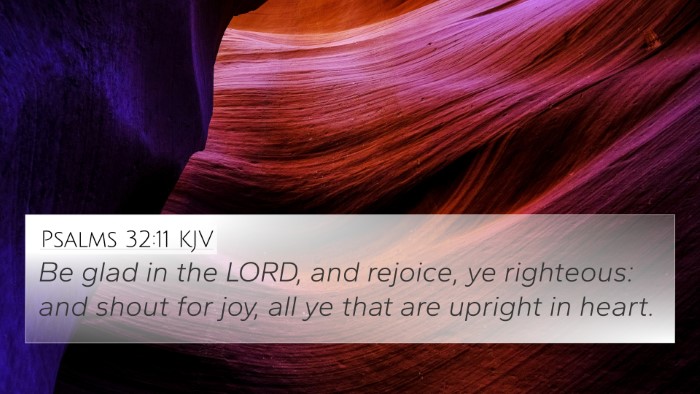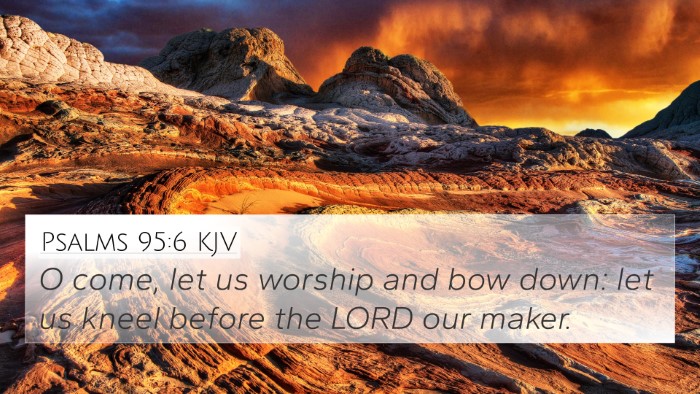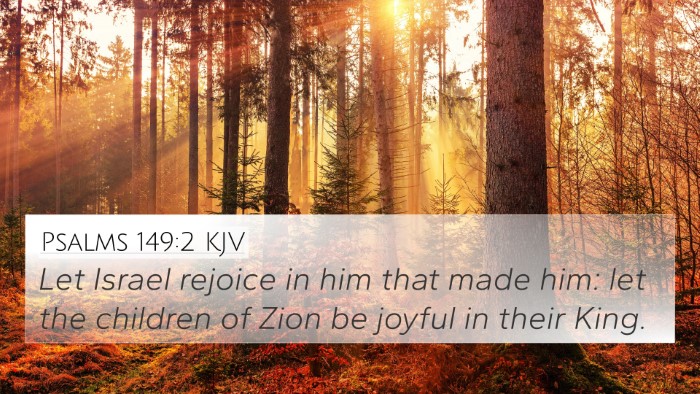Understanding 2 Chronicles 29:30
Verse Text: "Moreover, Hezekiah the king and the princes commanded the Levites to sing praises unto the Lord with the words of David, and of Asaph the seer. And they sang praises with gladness, and they bowed their heads and worshipped."
Summary of Meaning
This verse captures a pivotal moment in the reformation of worship practices under King Hezekiah in the ancient kingdom of Judah. Here, Hezekiah commands the Levites to lead the congregation in songs of praise, reflecting a restoration of proper worship and community devotion to God.
Key Themes and Insights
- Restoration of Worship: Hezekiah's command represented a return to the prescribed forms of worship as seen in the writings of David, illustrating the importance of adhering to the traditions that honor God.
- Role of Community: The collective participation in worship signifies unity among the people in their devotion to God, emphasizing the communal aspect of worship.
- Joy in Worship: The gladness expressed during the singing symbolizes the joy found in true worship and can be transformative for the congregants.
- Hierarchy in Worship: The instruction from the king, followed by the obedient response of the Levites, portrays an orderliness in the conduct of worship, which is essential for effective praise to God.
- Significance of Music: Music serves as a powerful means of expression in worship, echoing throughout the scriptures as a method of glorifying God and edifying the community.
Bible Cross-References
The significance of 2 Chronicles 29:30 can be examined through various connected scriptures that emphasize the themes of worship, music, and community. Notable cross-references include:
- 1 Chronicles 16:4-6: This passage reflects on the arrangement of worship by David, reinforcing the continuity of worship practices.
- Psalm 47:1: Acts as an exhortation to clap hands and shout unto God, which parallels the exuberance found in Hezekiah's worship setting.
- Psalm 100:1-5: A call to joyful worship and thanksgiving towards the Lord, aligning with the gladness expressed in 2 Chronicles 29:30.
- 2 Chronicles 30:21: Continues the narrative of Hezekiah's efforts in reinstating Passover celebrations, showcasing his dedication towards restoring worship.
- Colossians 3:16: Encourages believers to sing psalms and hymns, resembling the New Testament understanding of worship through music and community.
- Ezra 3:10: Highlights the role of singing in the rebuilding of the temple, which can draw parallels to Hezekiah's reforms.
- Romans 12:1: Encourages believers to offer themselves as living sacrifices, which can be connected to the concept of worship as lifestyle presented in this verse.
Interpretations from Commentaries
Insights from prominent public domain commentaries provide further understanding of the text:
- Matthew Henry: Emphasizes the joy and reverence that true worship should foster among the worshippers, indicating that genuine praise leads to a deeper sense of spiritual connection.
- Albert Barnes: Points out the historical context, noting how Hezekiah’s reforms were not merely ceremonial but aimed at reinstating a heart-centered worship experience among the people.
- Adam Clarke: Discusses the significance of the Levites’ role in worship, underlining the leadership aspect in facilitating communal worship and ensuring that praises are appropriately directed to God.
The Importance of Cross-Referencing
Cross-referencing biblical texts serves as a vital tool for examining the rich tapestry of scriptural themes. By exploring the connections between verses, readers can enhance their understanding of individual passages and draw deeper theological insights.
How to Use Bible Cross-References
Using a Bible cross-reference guide, one can:
- Identify Relationships: Through tools such as a concordance, readers can discover verses that share similar themes or contexts.
- Enhance Personal Study: Cross-referencing aids in developing a comprehensive understanding of scripture, thus enriching one’s personal Bible study.
- Support Sermon Preparation: By finding linked verses, preachers can draw parallels and demonstrate thematic connections in their messages.
- Linking Old and New Testaments: Understanding how specific verses relate across the Testaments promotes a fuller appreciation of the narrative of redemption.
Conclusion
In conclusion, 2 Chronicles 29:30 exemplifies the significance of worship restoration and joy through communal praise. By engaging in comparative analysis and exploring related scriptures, believers can cultivate a richer worship experience and a deeper understanding of God’s word.
Further Study Recommendations
For those eager to delve deeper into cross-referencing methodologically and thematically:
- Explore how specific themes such as "Joy in Worship" can be traced through various scripture passages.
- Study the role of music in the Bible, assessing how it contributes to the overarching theme of worship.
- Engage in a detailed comparative study of the Gospels, identifying harmonies and variances in their accounts of worship practices.
